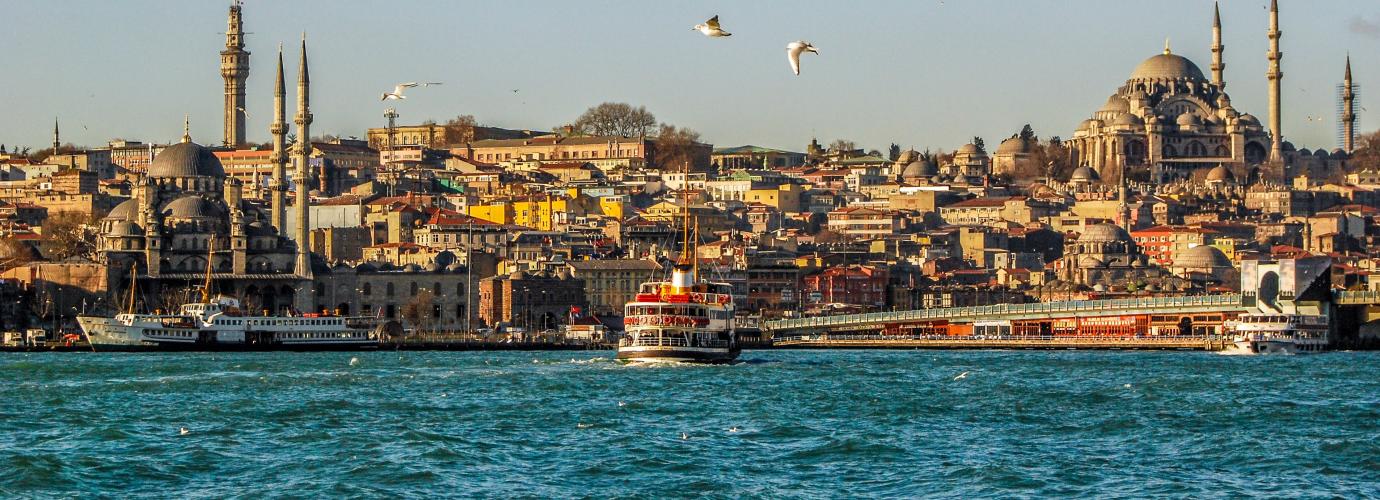Types of Institutions
Vocational and technical upper secondary education institutions consist of vocational and technical Anatolian high schools, vocational training centers, multi-program Anatolian high schools and special education vocational high schools. Vocational and technical education aims to prepare students for higher education and/ or business life by giving them a common general culture in line with their interests and abilities within a flexible structure as well as raising them as good citizens.
Geographic Accessibility
For the geographical accessibility of vocational and technical upper secondary education, the information on the geographical accessibility of secondary education applies.
Admission Requirements and School Preferences
For admission requirements and school choices for vocational and technical upper secondary education, the information on requirements and choices for upper secondary education school applies.
Age Levels and Grouping of Students
Unlike the age levels and grouping of students in upper secondary education, those who will be enrolled in the vocational training center program are required to have completed the age of 14.
Organization of the School Year
In addition to the information in the section on the organization of the school year in upper secondary education, the working day principle can be extended for internships and skills training in vocational and technical education institutions. The training of theoretical and practical courses of each grade can also be intensified. The work schedule for intensified education is arranged in such a way that the training period of a course is not less than the total number of course hours for a school year. The procedures and principles of intensified education carried out in cooperation with institutions and organizations are determined by a protocol to be signed between the directorate of the institution and the business authorities.
Taking into account the characteristics of the sector, working and capacity status, school and climatic conditions, students who have completed the common courses in the 10th grade in food and beverage services, accommodation and travel services, maritime fields, animal breeding and health and agriculture fields and other fields / branches approved by the Ministry, which are active at certain times of the year, can receive intensive training in the 11th and 12th grade branch courses in enterprises. In schools in settlements with a sufficient number of workplaces operating throughout the year in these fields/disciplines, some of the students may continue vocational education in enterprises without intensified education, taking into account the capacity of the enterprises. When determining the dates of the education that students will receive at school or in the workplace, an average of six months is allocated for the education in both units. This period can be changed by the governorship if needed. However, in general, it is essential that students receive vocational training at school in the period between the first week of October and the second week of April, and at workplaces in the other time period except for rest leaves. In the 10th and 11th grades, students are given two weeks of rest leave each between the date when classes are interrupted and after the skills exam. The 9th and 10th grades of the schools within this scope start education together with other secondary education institutions, and the 11th and 12th grade students start education two weeks after the end of the year-end skills exam. The theoretical education of Vocational Education Center students is planned as one day a week (Regulation on Upper Secondary Education Institutions).
Within the scope of the projects and protocols implemented by the Ministry, the duration of theoretical training may vary according to the nature of the program implemented. If the conditions are met and the enterprise requests, the training of common field / branch and elective courses can be given in the training units of the enterprises. These students continue their vocational training at the enterprise throughout the academic year, except for paid and unpaid leave periods, as long as their contracts with the enterprises continue in accordance with the provisions of the Vocational Education Law No. 3308 (Regulation on Upper Secondary Education Institutions).
Organization of the School Days and Weeks
Education is given five days a week. In schools implementing vocational training center programs, theoretical education is given one day a week and skills training in enterprises four days a week. Exceptions are possible when specified in the curriculum. The number of compulsory course hours is predetermined. The maximum weekly course is 46 hours. One hour of class is 40 minutes for all grades. In all-day institutions, there is a lunch break. Breaks between classes may not be less than 10 minutes and the lunch break may not be less than 45 minutes. If necessary, classes may be held in blocks. Each block of classes is limited to two class periods.
The duration of a class hour is 60 minutes for vocational education at enterprises and internships at schools and enterprises. It is essential that vocational education in enterprises is carried out during the day. However, according to Article 73 of the Labor Law No. 4857, vocational training in other sectors other than industrial jobs can be carried out at night, taking into account the characteristics of the sector and the type of program, climatic conditions and enterprises working at certain times of the year, with the decision of the provincial employment and vocational education board, not exceeding 8 hours a day and 22.00 hours. In addition, according to the intensified education program, vocational education in enterprises can be planned for 6 days a week upon the request of the parent or the student if he/she is of legal age, provided that it does not exceed the maximum weekly working hours (Regulation on Upper Secondary Education Institutions).

